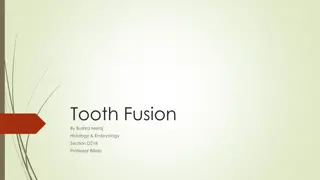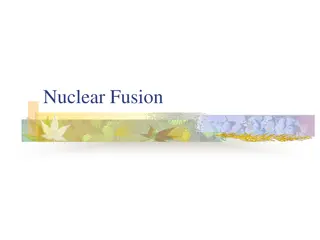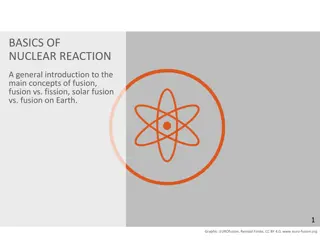Understanding Labial Fusion: Causes, Symptoms, and Treatment
Labial fusion is a medical condition where the labia minora partially or fully fuse together. It is most common in infants and young children, with suggested causes being low estrogen levels and irritative conditions. While often asymptomatic, some cases may lead to urinary issues. Treatment may involve natural separation over time, the use of estrogen cream, or surgical release in severe instances.
Download Presentation

Please find below an Image/Link to download the presentation.
The content on the website is provided AS IS for your information and personal use only. It may not be sold, licensed, or shared on other websites without obtaining consent from the author. Download presentation by click this link. If you encounter any issues during the download, it is possible that the publisher has removed the file from their server.
E N D
Presentation Transcript
Introduction Labial fusion is a medical condition characterized by partial or complete midline fusion of labia minora. It is also known as labial fusion, labial adhesion, labial agglutination, labial adherence, gynatresia, vulvar fusion.
Epidemiology It is most common in infants between 3 months to 3 years with its peak incidence between 13-23.No cases of neonates have been found so far.
Aetiology There is no specific cause for labial fusion though it is suggested that low levels of oestrogen and irritative conditions play a major role.
Risk Factors Hypoestrogenemia Recurrent or chronic local vaginal irritation Labial tissue trauma Dermatological disorders Sexual abuse
Clinical presentation It is mostly asymptomatic and can be discovered by a parent or during routine medical examination. Depending on severity of fusion, some patients may have urine pooling in the vagina post urination, then experience subsequent urine leakage from the vagina when they stand after voiding (post void dribbling, also called vaginal voiding).
Differentials Hymenal skin tags Imperforate hymen Paraurethral cyst Urethral polyp Vaginal atresia
Treatment Treatment is not usually necessary in asymptomatic cases, since most fusions will separate naturally over time. Oestrogen cream A small blob of the cream or ointment is applied daily on to the central line of fusion of the inner lips of the vulva for 4 to 6 weeks until the membrane starts to dissolve and the labia eventually separates completely. Surgical release
Indications Failure of topical Oestrogen Strong fusion of the labia Association with urine outflow obstruction Association with urine retention.
Complications Recurrent urinary tract infection Vulvar vestibulitis and inflammation caused by chronic urine exposure. Anuria Urinary retention























